Archive for June, 2011
One Skirt, Two Quilts
 My grandmother was an amazing quilter. She had such a knack for putting colors and fabrics together that I have often envied her talent. Over the years I have acquired several quilts she made. Some were gifts for birthdays or weddings and some were just Gran cleaning house and downsizing her belongings.
My grandmother was an amazing quilter. She had such a knack for putting colors and fabrics together that I have often envied her talent. Over the years I have acquired several quilts she made. Some were gifts for birthdays or weddings and some were just Gran cleaning house and downsizing her belongings.
No matter how they came to me I love each and every one. They are simple patterns, not the elaborate works of art you see from quilters these days. The fabrics used were old flour sacks, sugar bags, worn out clothes that my mom and Aunt wore as little girls, and remnants from the fabric store where my grandmother worked for more than 50 years. They are time capsules of color and texture that have kept me warm and reminded me of days when self-sufficiency was as common as summer heat and not a strange concept.
Quilting is a new skill for me. I started a few years ago with a simple rail fence pattern made from flannel, for my daughter. Unfortunately, I was never able to work on a quilt with my grandmother or have her teach me her special tricks of the trade; we lived too far apart for that. Like cooking from scratch, tending livestock or managing DIY project, quilting (and sewing) is one of those useful homestead skills that everyone should learn. With a few basic sewing skills like measuring, cutting and sewing a straight line you can turn previously unusable fabric into something that will keep you warm on a cold winter’s night.
I think that’s what I love most about quilting; the stories it can tell, the people it can touch, the hominess and warmth it can bring. My quilts will never win a prize at the county fair or be the envy of the ladies at the quilt guild, but they will remind my daughter and I of times spent together, of places we have gone and adventures we have had. You can wrap yourself up in a warm quilt and breathe in the memories.
Since finishing my first quilt, I have made 4 others, also simple patterns that remind me of simpler times and days when everything was repurposed into something useful.
The quilts in the picture are a prefect example. The quilt on the right is a completed quilt that lays on my bed. It is a play on the 9-patch Pizzazz pattern. A play mainly because it has 12-patches, instead of 9, in between the larger pieces of fabric that show off the sheep scene. The Little Boy Blue quilt on the left is a recently finished quilt top that still needs to be assembled, pinned, quilted, and bound before it can be used.
Both quilts are made from a pastoral sheep print skirt I bought on a driving trip from Colorado, down through New Mexico and on into California. I loved the fabric so much that when I stopped wearing the skirt I kept it, knowing that someday I would make it into a quilt. And I did.
One skirt, two quilts, a mom and her daughter warm in their beds, wrapped up in memories.
Summer Brew
An afternoon of making homemade root beer will be enjoyed over ice as a frothy thirst quencher or as a creamy root beer float after a long day of farm chores.
Growing Sweet Potatoes in a Tub
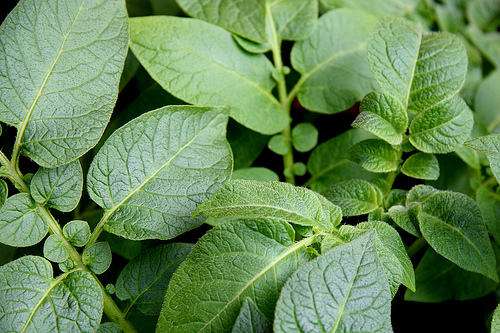
The traditional way of growing any kind of potato, whether it be baking, sweet or yam, is to plant slips in long parallel rows, giving the tubers plenty of room to grow. But, on a suburban homestead where the size of your lot dictates your growing space this is not always possible.
 With more crops than space to grow them in we must resort to more and more creative growing methods to produce the food our family wants. Permanent beds of veggies like artichokes, asparagus and potatoes take up valuable space that could be used for root crops, beans, peas or salad greens. On our suburban homestead we have resolved the challenge by growing potatoes in large black tubs. Actually, the tubs use to hold cattle supplements; a mixture of molasses, vitamins and other nutrients used by cattlemen to keep their stock healthy (as seen in this image).
With more crops than space to grow them in we must resort to more and more creative growing methods to produce the food our family wants. Permanent beds of veggies like artichokes, asparagus and potatoes take up valuable space that could be used for root crops, beans, peas or salad greens. On our suburban homestead we have resolved the challenge by growing potatoes in large black tubs. Actually, the tubs use to hold cattle supplements; a mixture of molasses, vitamins and other nutrients used by cattlemen to keep their stock healthy (as seen in this image).
My friend and cattleman, Bill uses about a dozen of these supplement tubs each year and this is the basis of my “potted” potato patch. When the potatoes are harvested, the tubs are cleaned and stored away over the winter, leaving plenty of garden space for other crops.
A few years ago Bill gave me about 10 of these tubs, which measure 24” in diameter and are about 2 feet deep. To make them useable as a planter I drilled drain holes around the bottom every few inches using my 1-inch flat drill bit. When I’m ready to plant my spuds I fill the tub with a mix of good garden soil, well rotted compost and potting soil. Potatoes like a loamy, well-drained soil that is not too rich, which causes the plant to grow more foliage than spuds. As I stir up the mixture I remove any rocks or hard lumpy soil that can damage the growing potatoes. Read the rest of the story »
Cheese Making Workshop
I just returned home from a cheese making workshop. The venue was a local farm education center that holds classes about gardening and small scale farming, gives tours of the test gardens and of course, presents workshops and seminars on topics interesting to the public.
The presenter for the day was a professor from a university up the coast well known for their farm dairy and cheese making facility. Dairy farmers and cheese makers from all over the state attend their seminars and workshops as part of their continuing education required by industry guidelines.
Following introductions the professor dove into an hour long educational segment on the intricate workings of a cow’s mammary system, the complexities of how milk is actually produced, the rules and regulations governing commercial milk production and the sale of milk products to consumers.
He spoke in scientific terms about the anatomy of the mammary system, the internal pumps that make milk flow and the process that pushed protein into milk. We learned about various diseases that affect commercial dairies and the methods dairy farmers practice to prevent and treat disease. The professor even touched on small farm dairies, their involvement in the industry and, much to my disappointment, the downside of small dairies, those with less than 50 cows, to be viable contributors in the milk market.
To say I was stunned would be mild. Read the rest of the story »
Making Maple Butter
Spring temperatures are rising, sap is flowing and that only means one thing…its Maple Syrup Season. It’s during this time of year that the warmth of spring pushes the maple tree sap up into the branches to nourish the leaves, making it the perfect time to capture the sweet juice.
Sap is collected by boring holes in each maple tree and inserting a spout. As the sap moves through the tree the sap drips from the spout into a waiting bucket. The buckets are collected and the rich golden sap is taken to a sugar house where it is boiled down, allowing all the water to evaporate. What’s left is super concentrated natural syrup that’s perfect on pancakes and waffles, muffins and toast, as a glaze for meats and even in baked goods.
No offense to the goodies above, but my favorite way to eat maple syrup is in a creamy, delicate Maple Butter. Slathered on fresh baked cornbread, partnered with peanut butter in a sandwich or spread on piping hot dinner rolls just out of the oven, it is a sinfully delicious way to enjoy the changing of a season all year long.
To make your own Maple Butter try this easy recipe.
Maple Butter
¾ cup softened homemade or pure butter (not margarine or buttery spreads)
1 cup pure maple syrup
• In a heavy pan heat maple syrup until it reaches about 240 degrees and begins to foam; about 10 minutes.
• Stir in butter
• Pour mixture into a glass mixing bowl and beat until thick and creamy, about 10 minutes.
• Store in a canning jar in the fridge.
If you are lucky enough to have a sugar maple, black maple or red maple tree on your property then you’re lucky enough to have the main ingredient for making your own pure maple syrup. To learn more about tapping maple trees and making maple syrup check out this bulletin by the University of Maine
![]() photo credit: PhoTones_TAKUMA
photo credit: PhoTones_TAKUMA
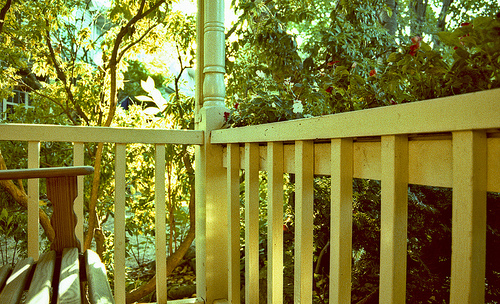
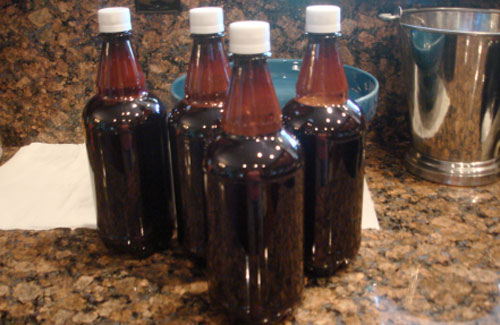
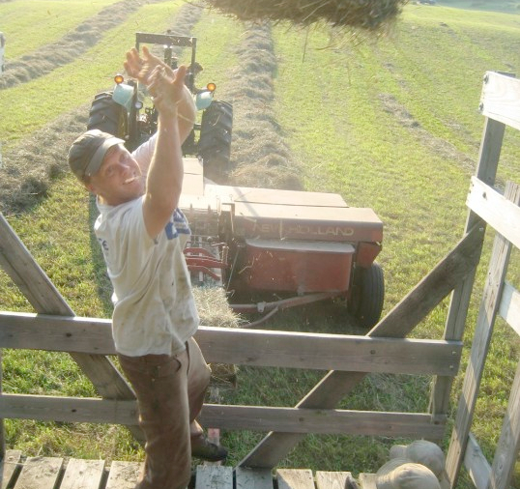

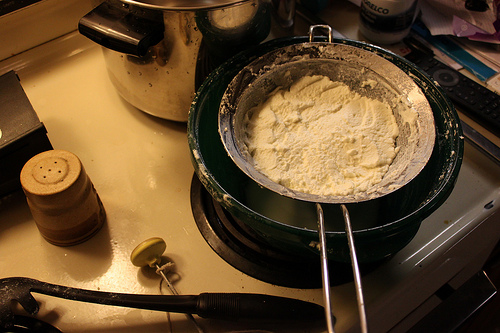

Recent comments
Aenean nonummy hendrerit mauris. Phasellus porta.